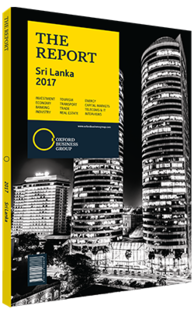Plans set to transform Sri Lanka's Colombo region into economic powerhouse
Colombo, the biggest city in Sri Lanka by some margin, is the country’s economic engine. A range of large-scale projects are under way that are set to transform the city into a regional centre for business, trade and investment. These initiatives can be complied into the Western Region Megapolis plan, a blueprint for developing an area of 3600 sq km in and around the capital.
Megapolis
The concept of the Western Region Megapolis was first floated nearly three decades ago, with then-minister of industry, science and technologies Ranil Wickremesinghe presenting a blueprint to the visiting Japanese premier in 1991. Similar plans circulated in the 2000s, but little concrete progress was made.
In January 2016, one year after Wickremesinghe was appointed prime minister, the Megapolis project was formally launched. The 15-year, $40bn plan for Colombo and a swathe of surrounding urban and suburban area, including the airport suburb of Katunayake and the separate city and tourist resort of Negombo, aims to make the area an economic powerhouse between Dubai and Singapore, as well as ensuring that it becomes one of the world’s most liveable cities for residents.
The western region accounts for just 6% of Sri Lanka’s land area but hosts around 29% of the population and generates more than 40% of the nation’s GDP. By 2030 the masterplan foresees raising the western region’s GDP to $230bn and creating employment opportunities for 2m people, cutting regional unemployment from 2.1% to 0.9%. The Megapolis project is central to the government’s target of raising GDP growth to 6-7% each year, and tripling per capita income to $12,000 through shifting from labour-intensive to skills-intensive industries and developing a knowledge-based economy.
Bold Targets
The Megapolis has three broad aims. First, to address congestion pressures on urban infrastructure, services, amenities and the environment, which have increased during decades of inconsistently planned development. Second, to create a high-income country and evading the middle-income trap through transformation of the country’s economic structure, and leveraging the advantages of agglomeration and urban development. And third, to harness the growth of the innovation-driven aspects of the global economy, which is leading to a new industrial revolution and the emergence of the smart city concept.
Beneath these overarching goals are more specific targets: increasing the contribution of small and medium-sized entities (SMEs) to the region’s GDP from 50% to 60%; boosting exports to 30% of GDP; increasing service sector contribution to GDP by 60% and that of the industrial segment by 42% by 2030; cutting the poverty rate from 2.2% to 1%; and building the western region as a high-end tourist destination with annual arrivals totalling 4.5m by 2035. At some stage beyond 2030, the masterplan envisages 100% of the region’s energy needs being supplied through green sources.
Zones
The Metropolis project outlines several economic zones that are specialised yet have strong synergies. Downtown Colombo is to become the central business district for the region, a major tourist destination with its historic districts and buildings, and a multi-modal transport centre for international and regional traffic. Horana will become an industrial zone focusing on SMEs with accompanying affordable housing and “green buffers” around industrial developments. Malabe will be a centre for research and development with premier universities and high-tech infrastructure. And Katunayake, the location of Colombo’s international airport, will become an “aero city” with associated business parks, transit hotels and conference facilities.
Financing
The Megapolis plans are ambitious and progress has been moderate. The government’s limited financial resources at a time of fiscal tightening suggests that private financing will play a central role in the project’s execution. However, attracting the investors needed to implement such a huge overhaul of the city requires the sort of pro-business reforms that Sri Lanka has historically struggled to implement.
You have reached the limit of premium articles you can view for free.
Choose from the options below to purchase print or digital editions of our Reports. You can also purchase a website subscription giving you unlimited access to all of our Reports online for 12 months.
If you have already purchased this Report or have a website subscription, please login to continue.

